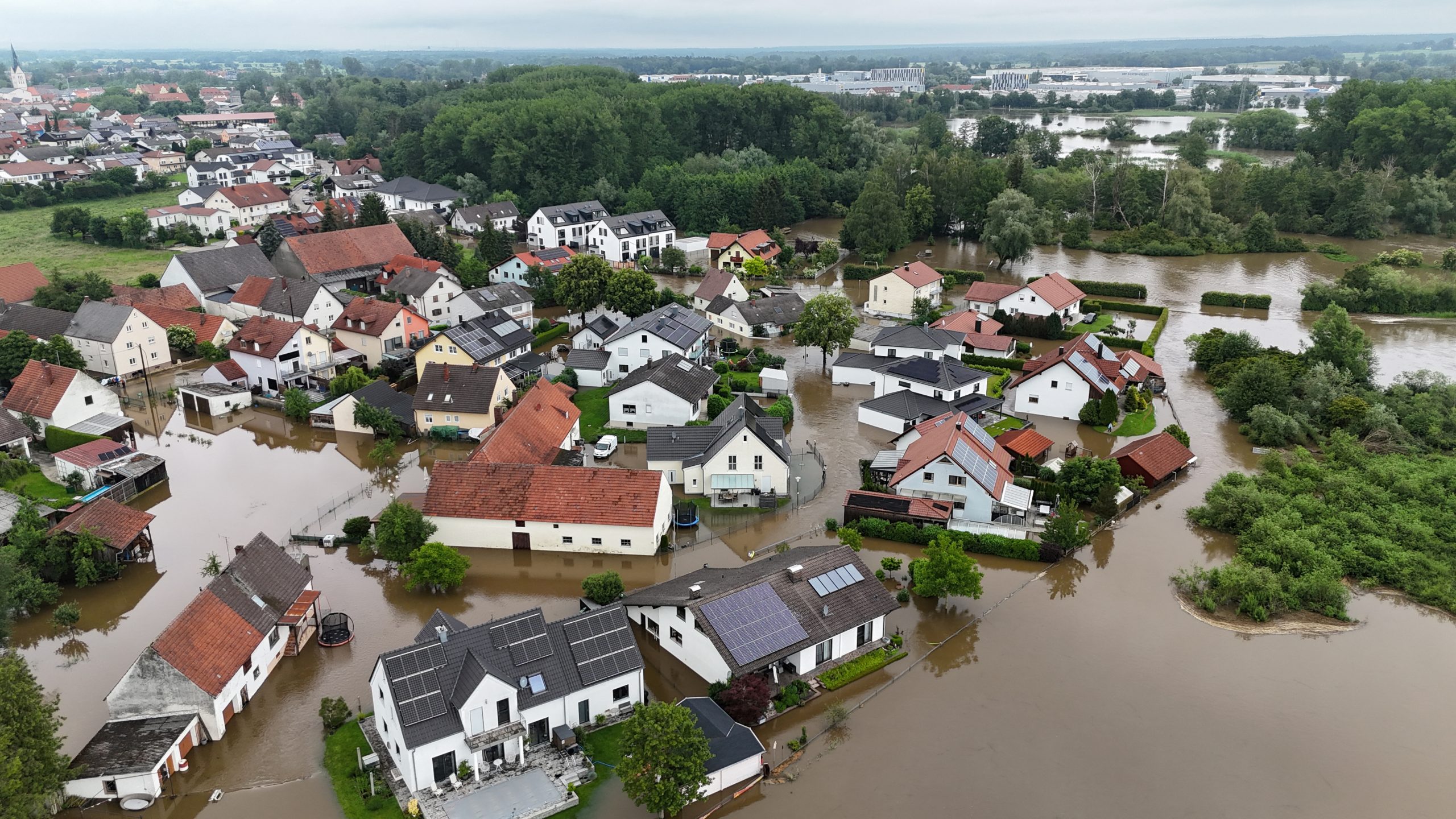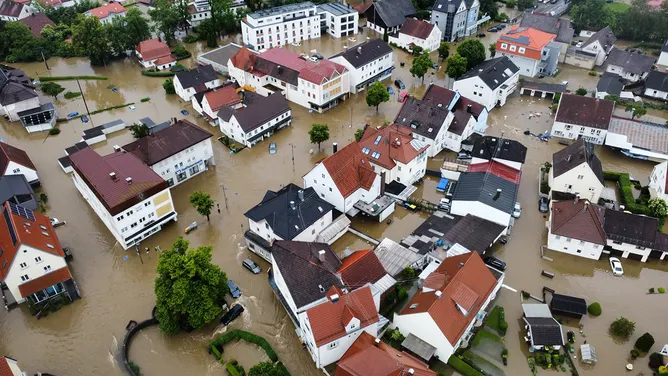Germany Floods In July 2021, Germany faced one of the most devastating natural disasters in its recent history. Torrential rains caused severe flooding across western regions of the country, particularly in the states of Rhineland-Palatinate and North Rhine-Westphalia. The floods resulted in extensive damage to infrastructure, loss of lives, and displacement of thousands of residents. This article delves into the causes, impact, response, and long-term implications of the Germany floods.
Page Contents
Causes of the Germany Floods

Extreme Weather Conditions
The primary cause of the Germany Floods was an extraordinary weather event characterized by heavy and sustained rainfall. Meteorologists identified a low-pressure system named “Bernd” as responsible for the unprecedented precipitation. The system stalled over parts of Western Europe, releasing record amounts of rain over a short period.
Climate Change
Experts have highlighted the role of climate change in exacerbating the severity of the floods. Rising global temperatures have led to increased moisture in the atmosphere, which can result in more intense and prolonged rainfall events. Additionally, climate change has altered weather patterns, making extreme weather events like heavy downpours more frequent and severe.
Geographic Vulnerabilities
Germany’s topography and river systems also contributed to the severity of the floods. The affected regions, particularly the Ahr Valley in Rhineland-Palatinate, are characterized by narrow river valleys that can quickly become overwhelmed by rapid water flow. The sudden influx of water led to rivers breaching their banks, inundating towns and villages.
Impact of the Germany Floods
Human Toll
The human toll of the floods was staggering. Over 180 people lost their lives, and many more were injured. The floods left a trail of destruction in their wake, with thousands of residents displaced from their homes. The psychological impact on survivors, many of whom lost loved ones and their homes, cannot be overstated.
Infrastructure Damage
The Germany Floods caused extensive damage to infrastructure, including roads, bridges, and buildings. Entire communities were submerged, with homes, schools, and businesses destroyed or severely damaged. The destruction of critical infrastructure such as power lines, water supply systems, and telecommunications networks further complicated rescue and relief efforts.
Economic Consequences
The economic impact of the Germany Floods was significant. The cost of rebuilding and repairing damaged infrastructure ran into billions of euros. Many businesses, particularly small and medium-sized enterprises, faced severe disruptions, leading to economic losses and job layoffs. The agricultural sector also suffered, with crops destroyed and farmland rendered unusable.
Environmental Impact
The Germany Floods also had a profound environmental impact. The sheer force of the water caused soil erosion, landslides, and the contamination of water sources. The destruction of natural habitats and ecosystems added to the environmental toll, with long-term consequences for biodiversity and the health of river systems.
Response and Relief Efforts

Immediate Response
In the immediate aftermath of the floods, emergency services, including the German military, fire brigades, and rescue teams, were mobilized to assist in rescue and relief operations. The response was swift but hampered by the scale of the disaster and the destruction of infrastructure. Thousands of volunteers also joined the efforts, providing critical support in rescuing stranded individuals and delivering aid.
Government Action
The German government, at both the federal and state levels, played a crucial role in coordinating the response to the floods. Chancellor Angela Merkel visited the affected areas, promising swift and substantial financial assistance for reconstruction and recovery. A relief package worth billions of euros was announced to support the rebuilding of infrastructure, homes, and businesses.
International Aid
The severity of the floods drew international attention and support. Several countries and international organizations offered aid and assistance, both financial and material. The European Union also pledged support, highlighting the need for a coordinated response to such disasters.
Long-Term Implications and Lessons Learned
Climate Change Adaptation
The Germany floods underscored the urgent need for climate change adaptation measures. As extreme weather events become more frequent and severe, countries must invest in resilient infrastructure and disaster preparedness. This includes improving early warning systems, enhancing flood defenses, and adopting sustainable land-use practices.
Urban Planning and Infrastructure
The disaster also highlighted the importance of urban fatcai planning and infrastructure resilience. Towns and cities need to be designed with climate resilience in mind, incorporating flood defenses, sustainable drainage systems, and green infrastructure. Rebuilding efforts in the affected regions have focused on incorporating these principles to reduce vulnerability to future Germany Floods.
Community Preparedness
Community preparedness and awareness are crucial in mitigating the impact of such disasters. The Germany Floods demonstrated the importance of educating residents about flood risks, evacuation procedures, and emergency response measures. Community-based initiatives and volunteer networks also played a vital role in the immediate response and recovery efforts.
Policy and Governance
The floods have prompted a re-evaluation of policies and governance structures related to disaster management and climate adaptation. Policymakers are considering reforms to improve coordination between federal, state, and local authorities, streamline emergency response mechanisms, and ensure adequate funding for disaster preparedness and resilience.
Personal Stories and Human Resilience

Stories of Survival and Heroism
Amid the devastation, numerous stories of survival and heroism emerged. Ordinary citizens, emergency responders, and volunteers demonstrated extraordinary bravery and compassion. Tales of neighbors rescuing each other, volunteers working tirelessly to provide aid, and communities coming together in the face of adversity highlighted the resilience of the human spirit.
Rebuilding Lives and Communities
The long road to recovery involves not only rebuilding physical infrastructure but also restoring the social fabric of affected communities. Psychological support, financial assistance, and community engagement are essential components of the recovery process. Efforts to rebuild homes, schools, and businesses are underway, with a focus on creating safer and more resilient communities.
Conclusion Germany Floods
The Germany floods of July 2021 were a stark reminder of the devastating impact of natural disasters and the growing threat posed by climate change. The floods caused significant loss of life, extensive damage to infrastructure, and profound economic and environmental consequences. The response to the disaster showcased the resilience and solidarity of affected communities, the dedication of emergency responders, and the importance of swift and coordinated action by governments and international organizations.
As Germany rebuilds, the lessons learned from this disaster will shape future policies and practices aimed at enhancing resilience and preparedness. The floods underscore the urgent need for climate action, investment in resilient infrastructure, and community preparedness. By addressing these challenges, Germany and other countries can better protect their citizens and communities from the growing threat of extreme weather events.
Read More Article About “Heringsalat: A Culinary Delight from the Baltic Sea“








